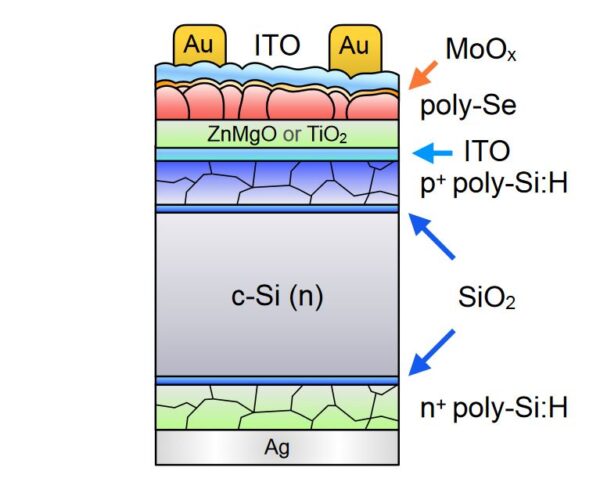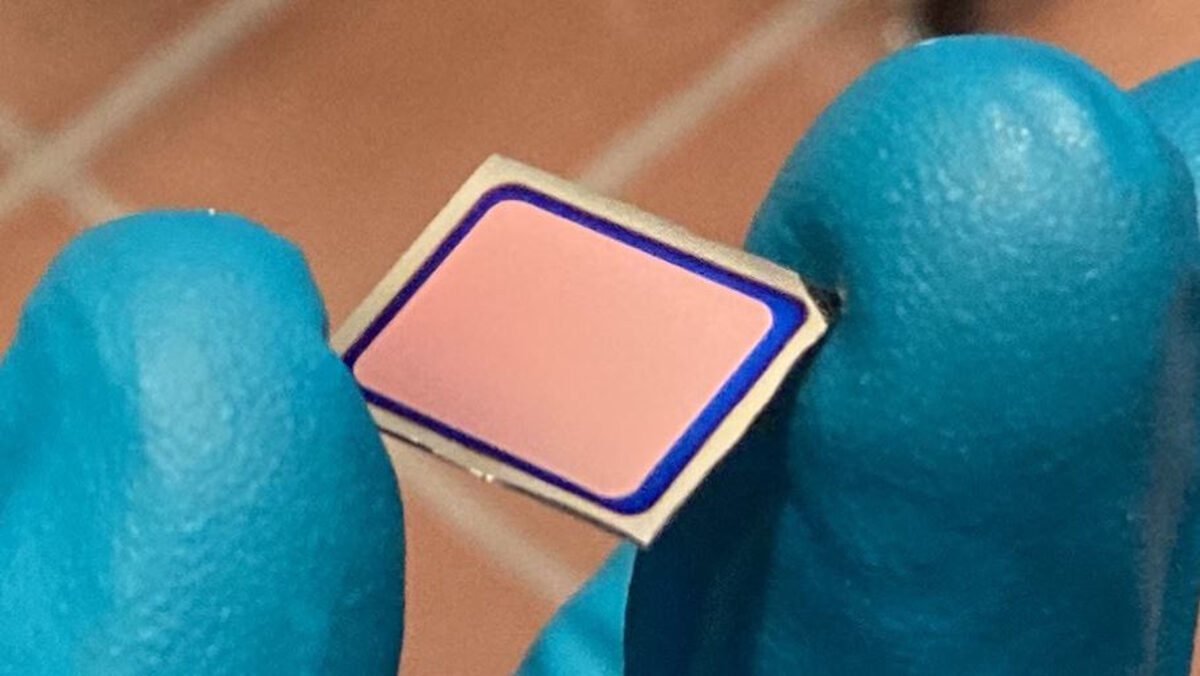A group of scientists led by the Technical University of Denmark has developed a tandem solar cell based on a top cell with a selenium (Se) absorber and a bottom device made of silicon (Si).
The novelty of the research consisted of integrating for the first time a wide energy bandgap Se cell in a PV device with a tandem configuration. This simple tandem device is unique as it is based on single-element absorber materials.
“The Shockley-Queisser limit for such a tandem solar cell comes out at more than 40% efficiency,” the research's corresponding author, Rasmus Nielsen, told pv magazine. “Therefore, this tandem solar cell has the potential to increase the power conversion efficiency of silicon solar cells at a very low cost, given that selenium needs to be processed at temperatures below 200 C.
The new cell, according to its creators is a potential alternative to perovskite-silicon tandem solar cells.Its pros include that the semiconductor is inorganic, consists only of one element, and is very good at absorbing light, on top of having low toxicity and being earth-abundant.
Using the SCAPS-1D solar cell capacitance software, developed by the University of Ghent, the researchers identified a critical transport barrier for this kind of tandem cell at the interface between the electron transport layer (ETL) and the recombination layer, which they said restricts the flow of charge carriers and reduces the cell's power conversion efficiency.

Image: Technical University of Denmark
They showed that this issue may be addressed by replacing zinc magnesium oxide (ZnMgO) with a layer of titanium dioxide (TiO2) for the n-type contact in the selenium top cell.
“The integrated short-circuit current densities of the individual subcells show that the selenium top cell is limiting the overall current of the tandem device,” they explained. “By applying a reverse bias to the top cell using the accessible third terminal, the collection efficiency significantly improves.”
Popular content
For the bottom silicon cell, the scientists used a customized n-type TOPCon device with an indium tin oxide (ITO) recombination layer and a silver (Ag) metal contact on the backside. The top device was fabricated directly on the ITO layer, using an n-type contact based on either zinc magnesium oxide (ZnMgO) or titanium dioxide (TiO2).
The scientists found that the ZnMgO-based tandem device reached an open-circuit voltage of 1.68 V, but a low efficiency. The best overall performance was achieved using the TiO2 n-type contact reaching an efficiency of 2.7%, which is 10 times higher than with the ZnMgO. The still significant losses from the selenium top cell were analyzed in depth, and strategies to further improve the tandem solar cell were proposed.
“By replacing the electron-selective transport material, we achieved a promising tenfold increase in efficiency, albeit compromising the ideal band alignment at the p-n heterojunction,” they stated. “This highlights the importance of optimizing the heterostructure interfaces, where the inclusion of surface modification layers should be considered.”
They introduced the new cell concept in the study “Monolithic Selenium/Silicon Tandem Solar Cells,” published in PRX Energy.
Looking forward, the research group said it intends to invert the device structure, so that the n-type and p-type contacts of both the top and bottom cells are swapped around. “We also suggest replacing the ITO layer with another recombination layer that is more compatible with ZnMgO thin films,” Nielsen explained. “Finally, a lot of series resistance losses should be addressed.”
This content is protected by copyright and may not be reused. If you want to cooperate with us and would like to reuse some of our content, please contact: editors@pv-magazine.com.



By submitting this form you agree to pv magazine using your data for the purposes of publishing your comment.
Your personal data will only be disclosed or otherwise transmitted to third parties for the purposes of spam filtering or if this is necessary for technical maintenance of the website. Any other transfer to third parties will not take place unless this is justified on the basis of applicable data protection regulations or if pv magazine is legally obliged to do so.
You may revoke this consent at any time with effect for the future, in which case your personal data will be deleted immediately. Otherwise, your data will be deleted if pv magazine has processed your request or the purpose of data storage is fulfilled.
Further information on data privacy can be found in our Data Protection Policy.